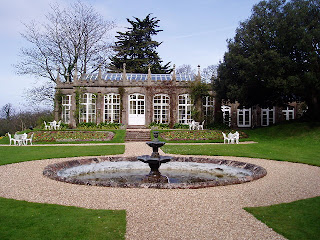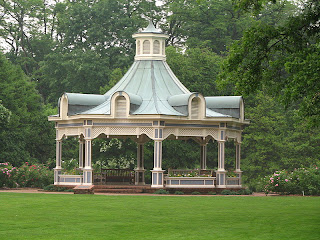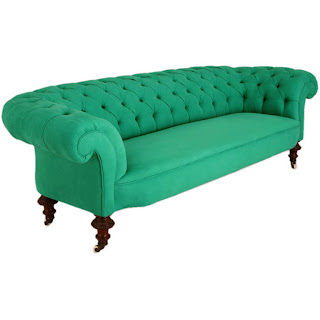The Period Garden
Whilst sat at my table pondering on what would be the subject for my next blog posting I realised spring has arrived and summer is fast approaching. Looking out of my window here in Edmonton its a little hard to believe, the record snowfall of the past few months is still very evident although slowly beginning to melt. However the sky is a beautiful blue which instantly led to my thinking about being outside and the precious summer months to come.
Over my next series of postings I want to try and discover more about antique garden structures, the furniture and decoration that come together to make up wonderful period gardens . This is a huge subject with lots of parts to the story so I thought it would be easier to break up and write about in sections.
The Orangery
An Orangery is a building that was likely to be found within the grounds of wealthy residences between the 17th and early 20th century. It was a glazed structure in similar style to a greenhouse only usually far more impressive and was designed to hold young citrus trees in the winter protecting them from frosts and harsh winter weather.
Originating from Italy as long ago as 1545 they were at first not that well planned being often quite draughty and sometimes heated with a fire providing warmth to ensure the precious fruit plants survived.
 |
| The Orangery at St Audrie Park in England (Picture by courtesy of Bob Tinley) |
The building of these became most fashionable in Europe at the towards the end of 1648 after the end of the Eighty year war. The countries involved greatly in pushing this trend were the Netherlands, France & Germany as they were the largest importers of orange trees and other precious fruit plants at this time.
Eventually as glass making techniques improved and Orangeries became more insulated their owners found they were also the ideal place to relax and entertain.
Today the modern Orangery is used for many reasons such as kitchen extensions, home offices, dining areas as well entertaining and relaxing. Their original use is somewhat redundant today due to exotic fruits now being widely available.
 |
| The Orangery at Hampton Court Palace, London. |
The Folly
Dating back to the 16th & 17th centuries the Folly was a purely decorative element on large estates throughout Europe . Many of the older grander houses had derelict ruins in their grounds, in Britain & France it would have likely to been monastic house and through Italy derelict Roman Villas were often to be found. In grounds of houses that had no such ruins it was commonplace for such buildings to be constructed.
| The Beacon folly at Staunton Country Park , England. (Picture courtesy of Geni) |
In the 18th century the folly formed an important part of the English and French garden landscape. Many were built in this time with purpose such as a hunting tower or garden storage. Among many others some of the more common themes for follies were in the form of a Roman Villas, Egyptian pyramids or even Gothic ruins.
In the early 19th century the themes became more exotic and included Chinese pagodas and Tatar tents.
| The Temple of Modern Philosophy in Ermonville France circa 1765 (Picture courtesy of Parisette) |
The remains of some follies can be seen today and there are even action groups throughout Europe trying to protect and preserve the historic values of these structures.
 |
| A Composition Stone & Faux Lead "Folly" Style Garden Temple, Offered by http://www.lassco.co.uk |
The Gazebo
As a garden structure was usually a domed or pagoda shaped build occasionally it also came in different forms. It was used for both a decorative purpose and for light shelter. The Gazebo has been around one way or other for a few centuries first being mentioned in a poem by Cordban back in 1160. These were at their height of popularity in early Victorian times and were usually made of wrought iron and later in the 19th century wirework construction became the vogue.
 |
| An English Victorian Gazebo |
 |
| A Reproduction Wire Gazebo, Offered by; www.garden-requisites.co.uk |
The Summer House
This Structure is most certainly English by tradition, other countries have cabins or chalets & lodges. Sitting in the Summer House was a real British tradition and to some extents still is. Most of the original house date to around the beginning of the 20th century and due to the construction being almost entirely of wood few originals have survived. The most novel examples were built by a company called Boulton & Paul and revolved on a base so as to catch the sun at any time of day.
 |
| An Original English Summer House Outside & Interior |
Tweet


Comments
Post a Comment